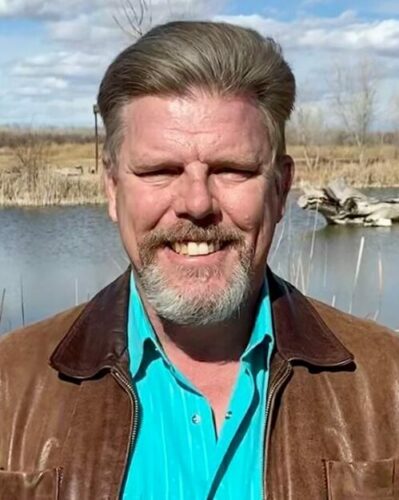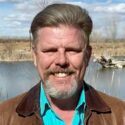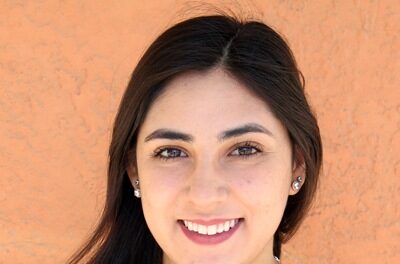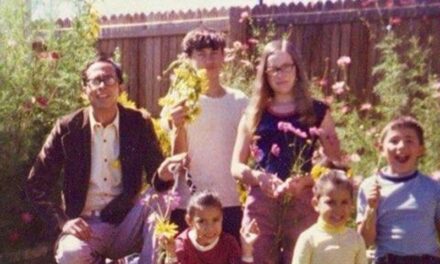
Andrew Hautzinger
On April 11, 2022, the Big Hole Fire burned 904 acres of land along the floodplain of the Middle Rio Grande (MRG), threatening people, animals, houses and our shared bosque.
April 11th’s fire marked a turning point in the history of our Whitfield Wildlife Conservation Area, as over 75 percent of this community asset was burned. Although we are seeing encouraging emergence of new plants bursting through the ashy duff of the burned areas, we also realize a handful of majestic old cottonwoods and willows, burned bad enough that they won’t survive.
Whitfield’s iconic Owl Tree is perhaps the loss that stings the deepest: This 100-year-old tree has offered shade to countless hikers and visiting groups of students, being the inspiration for third-grader poems and fourth-grader drawings sent to the staff of our Valencia Soil and Water Conservation District (VSWCD) as a thank you from students after their visit to the conservation area.
These old trees do not like fire, because trees in the bosque have evolved to be flood adapted — not fire adapted, like their distant evergreen cousins up in the mountains (who often need fire to release seeds from their pinecones). In the bosque, flooding is nature’s promotion of the next generation of trees, whereby the river clears areas to allow new seeds to grow with their roots chasing the lowering groundwater table of a flood’s aftermath.
Unfortunately, with the Rio Grande’s altered hydrology of dams and innumerable levees, it can no longer effectively play the role of forest maker, because the changes in the floodplain and the increasing severity of climate change reduce its stream power and ability to annually rise and knock down old growth in preparation for the start of new seedlings.
Today’s bosque has transitioned from being filled with open grassy areas with the occasional grove of trees, to being a floodplain with continuous lines of increasingly invasive trees (salt cedar, Russian olive and Siberian elm), with a thick understory of largely non-native vegetation and dead fall, now traversed by a river that has lost its hydrologic gusto.
These factors all combine to create our treasured bosque of today: a wonderful — yet flammable — tumble of thick vegetation and wildlife, altogether too ready to burn.
The VSWCD is acutely aware of the many stresses facing our bosque, as our district encompasses more than 35 river miles of the Middle Rio Grande bosque, filled with more than 5,000 acres of dense riparian vegetation and habitat. Within this Isleta Reach of the Middle Rio Grande are the three conservation areas of the Whitfield Complex, including Whitfield Main and our newest properties, the Stacy Unit and the Rio Abajo Conservation Area.
The Big Hole was the biggest bosque fire ever. A bosque left alone after fire will allow invasives to out-compete native vegetation in gaining a post-fire toe hold. We saw the Big Hole Fire burn Whitfield and Stacy, and cannot help but wonder: What can we do to help keep RACA from being next?
We are working with many in the community to make progress on how we manage our bosque and reduce the ever-increasing fire danger. As we assess the damage from the Big Hole Fire, we find solace in knowing that Whitfield can be replanted and rebuilt. The silver lining is we are 20 years smarter than when the Whitfield community experiment started, and proper management of the recovery (with community-powered re-plantings) holds promise for a new day.
The gold lining here is using the fiery death of Whitfield’s 100-year-old trees to motivate us to improve how we manage our shared bosque. Can we work with fire professionals, ecologists, farmers, landowners and all who care about our bosque, to improve our management of the bosque and to protect life, property and habitat? Yes, we can!
On Saturday, May 21, you are invited to our Rio Abajo Conservation Area public listening session, where from 10 a.m. to 2 p.m., the Valencia SWCD will update community members and partners on this special piece of 150-acres of public land, and discuss how to protect it, keep it from burning, and open it for public uses that fit within a conservation mandate.
We hope to hear your ideas about the future of RACA. We will also describe how the heart of RACA is its 50-acre stand of middle-aged cottonwood trees that are threatened with a dense non-native understory and years of buildup of dead fall and forest fuels, setting the stage for a truly catastrophic fire, if action is not taken to reduce the danger.
Please join us at RACA, 16 Rio Grande Stables Road in Rio Communities, for a conversation on how RACA can be an example of how we can manage our treasured bosque to reduce fires and protect land and habitat, while improving public access.
Let us not let the death of the Whitfield’s Owl Tree be in vain.
(Andrew Hautzinger is the district director of the Valencia Soil and Water Conservation District.)

Andrew Hautzinger, guest columnist
Andrew Hautzinger has been the district director for the Valencia Soil and Water Conservation District since 2020. Prior to that, he was a volunteer VSWCD board member for 12 years and spent many years volunteering at the Whitfield Wildlife Conservation Area.
Hautzinger has a bachelor of science in watershed sciences from Colorado State University. He worked for more than 27 years as a federal hydrologist working for agencies within the Department of Interior including the U.S. Bureau of Land Management, U.S. National Park Service, and for the final 20 years of his career, with the U.S. Fish and Wildlife Services’ National Wildlife Refuge System.
















